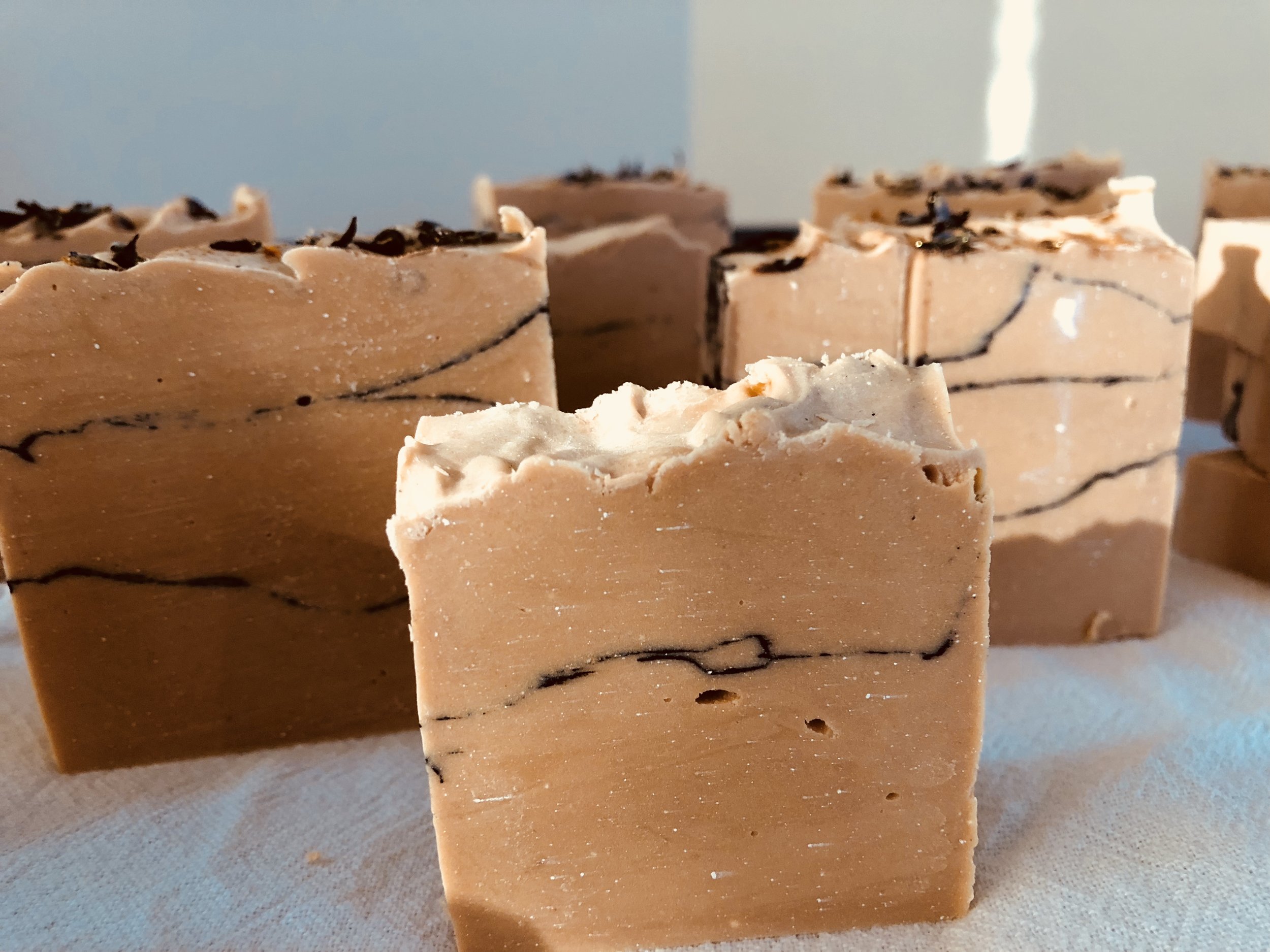Making soap is pretty rewarding: you can take a few pretty innocuous ingredients and, with some careful measurements and a lot of stirring, end up with a beautiful, chemical-free product that's cheap and long-lasting.
There's all kinds, but I've started to think olive oil soap might be the best option for several reasons. I weighed the pros and cons for you below.
olive oil soap pros:
- cheap and one of the most readily available oil out there
- very conditioning for the skin
- like wine, bars improve with time, becoming harder & more conditioning
olive oil soap cons:
- takes longer to trace (longer stirring time)
- makes a soft soap (if you don't add other minerals/oils)
- not a bubbly, sudsy bar (if 100% olive oil)
- soap is a greenish/yellow and takes a lot of titanium dioxide (natural mineral) powder to whiten
I've found some workarounds for these cons. I intend to purchase an immersion blender, since I've been using a far inferior hand mixer. I hear it's a game changer: stir for minutes instead of hours. Second, adding just 15% coconut oil to 85% olive oil really helps with bubbles and hardness; so does sodium lactate (a natural salt, so if you don't have this ingredient, dissolved salt in your lye solution works just as well). Because of my hand mixer situation, I've been adding 2 teaspoons of honey to accelerate trace. This helps with hardness and bubbles as well, though not the caramel colour situation.
Better luck next time...
Once I have my immersion blender, I'm going to try using coconut milk, which apparently is less likely to scorch (turn yellow) and helps contribute to a creamy white shade. But for now, I will catalogue these recipes as learning experiences.
Slow & Steady Bastille Soap
Blended in turmeric, then swirled in charcoal before pouring
Cured bar #inthewild, 5 months later! Love how much it mimics the wood dish.
Waiting to unmold...
Aaand, cut! Look at that swirl!
Series: "Petrified Wood"
25.2 oz olive oil
6.4 oz coconut oil
4.41 oz lye
8.56 oz water
2 tsp sodium lactate
2 tbs maple honey (accelerant)
2 tsp powdered turmeric (for colour; add at trace)
1 tsp activated charcoal (for colour; add at trace)
Cost per 100g / 3.5 oz bar: $1.19
Notes: This took forever to trace. We finally added the honey out of desperation—and in hindsight it was too much. The soap got very hot, 170 deg F, and you can see how much the sugar caramelized and crystallized in the final bars. Next time, adding a bit of hard oil like shea or cocoa butter, or palm oil, would have likely made a big difference. So would a 10-20% water discount... though I'm still a little fuzzy on how to calculate those.
Even though I put the molds in the freezer right away, the loaf molds still went through partial gel phase, so the colour transformation wasn't as complete or vivid as I'd hoped. Still, interesting how dark the sugar "burned" and then lightened over time.
Buttermilk Bastille Baby Soap
Gorgeous! Love those forked charcoal lines.
This photo makes me want to use gold mica in EVERYTHING.
Photo taken just before sunset...
I almost wonder if a better name would be "Saturn's Rings"
Series: "Charred Peach"
- 27 oz olive oil
- 5 oz coconut oil
- 10.5 oz buttermilk*
- 4.3 oz lye
- 2 tsps honey (accelerant)
- 3 tbs Australian rose clay (for colour; add at trace)
- 3 tbs titanium dioxide (natural whitener)
- 1/4 tsp gold mica (accent)
- 2 tsp activated charcoal powder (accent)
- dried lavender flowers (accent)
Cost per 100g / 3.5 oz bar: $1.36
Notes: Coconut oil is pretty expensive, even the cheap stuff from Walmart. Colourants aren't cheap, either. Better if we could have started with a lighter base. You'll note the base ingredients are almost identical to the first recipe, and yet the liquid added to the lye (water vs buttermilk) is not equal. Originally, this recipe called for 8 oz of buttermilk and 2.5 oz of pureed carrots, for natural colourant. Some substituted this for equal weight, though I think that was a mistake. Some of that weight would have been the carrot fibre and not water, so I should have probably only added 10 or 9.75 oz of buttermilk instead of 10.5 oz. Perhaps that contributed to slower trace... because any excess moisture was certainly swallowed up by the rose clay once honey had accelerated trace.
Next time, figure out a water discount. Even with Superstore bulk, olive oil is $0.24 an ounce. Canola oil I can get as low as $0.05 or $0.09 an ounce, though it can't completely replace olive oil. That would bring cost per bar to $1.09 each. I'm not sure how canola oil would affect trace.
We added probably more than 3 tbs of rose clay in attempts to heighten the colour, but alas, after gel phase it seemed to fade to a more neutral shade of peach. Perhaps the honey contributed to this colour loss, with high heat; but the honey also darkened the batch and made it harder for us to whiten. In future, make a harder bar so that honey isn't the last resort!









